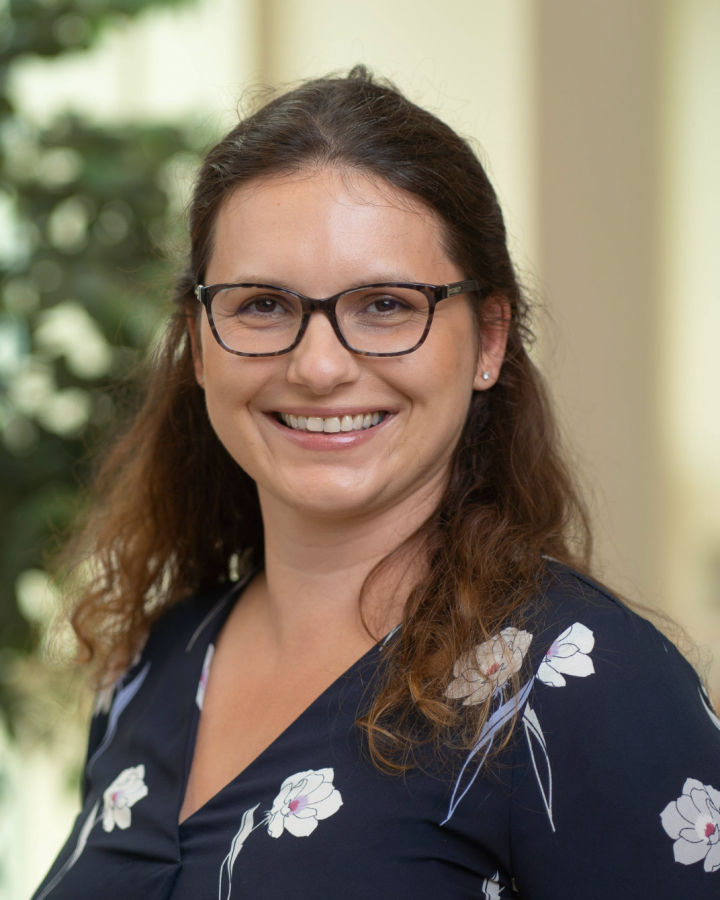Professor Galaj on Treating Drug Addiction and Abuse
With the rising opioid epidemic across the United States, Assistant Professor of Psychology and Neuroscience Ewa Galaj’s research on drug addiction and reward pathways is pertinent to today’s climate. Galaj is pursuing three lines of research at the moment concerning drug addiction and the neural pathways involved. She looks at addiction through the lens of a pharmacological or behavioral approach, mapping the parts of the brain that are involved in addiction, and looking to the brain’s neuroplasticity as the last line of research to understand how the brain changes over time as a result of alcohol and other drug use.
“The first question that I’m asking is really looking at novel pharmacological or behavioral approaches that could be used to treat addiction because for certain types of addictions, like cocaine addiction or methamphetamine, we really don’t have the FDA approved medications. So [I am] testing different novel compounds, hoping that one day they will go into clinical trials and they can be effective treatment for people who will suffer from addiction.”
Through this first line of research, Galaj attempts to find the compounds that can help find key breakthroughs into advancing potential drug and other behavioral therapy for those who suffer from addiction.
“The second line of my research is really looking at the pathways and circuitry of which brain regions are involved in opioid taking, relapse withdrawals as well as pain,” Galaj said. “So, currently I’m focused on two brain regions that are really connected: the substantia nigra and thalamus.”
Galaj notes that these pathways were not always known to be involved in drug addiction and drug administration processes in the body.
“For a long time we thought that these pathways were motor pathways involving motor behaviors and Parkinson’s, but we now know that’s only partially correct. This pathway is also involved in drugs of administration. We actually found that it’s also involved in pain and in opioid induced analgesia. So I’m trying to map the circuitry to really answer the questions of which of the pathways or circuitry are involved in opioid addiction.”
Galaj examines the brain from different levels of analyses to understand drug addiction as a whole.
“The third line of my research is looking at neuroplasticity. So how the brain changes after chronic exposure to alcohol or heroin, for example. We found that early adolescence alcohol exposure has a profound impact on cholinergic interneurons in the nucleus accumbens and other parts of brain regions. So basically alcohol destroys these cholinergic neurons, and currently my students are looking at whether CRF [corticotropin-releasing factor] receptors are affected by chronic heroin exposure. So we’re looking at neuroplasticity in different brain regions after an alcohol or drug exposure.”
Understanding the brain and how it changes over time is important to gaining a more holistic view of just how long-lasting the effects of drug use are and how relevant this research is in the current climate.
“Currently we have not only a pandemic but also an opioid epidemic. And so many people are overdosing on drugs. People fool around with different drugs, not only opioids – sometimes it could be cocaine, sometimes it could be methamphetamine,” Galaj explained. “And oftentimes, they don’t even realize that these drugs are laced with fentanyl, a deadly drug. Right, so it’s all really relevant to what is happening.”
Galaj has been passionate about neuroscience in both her collegiate and professional life and her focus has always been on drug addiction. She completed her postdoctoral research at the National Institute of Drug Abuse and continued her studies at Binghamton University. Galaj graduated from SUNY Graduate Center in New York City.
Galaj explains that her interest in drug addiction took off while she was at SUNY.
“In the graduate center, I was in the neuropsychology program basic track and I joined a lab that specializes in drug addiction, learning, and motivation. It really opened my interest to drug addiction and then the follow-up postdoctoral trainings were also in drug addiction. So that’s really how it all started.”
Looking at the bigger picture, Galaj hopes that her research will make a meaningful breakthrough in her field and that one day we will be able to discover some effective treatment for addiction.
In the meantime, however, she hopes to inspire college students to pursue careers in neuroscience.
“If you like research you should pursue your career in neuroscience. Go for your PhD. It’s very rewarding. I strongly recommend looking for a research opportunity as early as possible in the summertime, as well,” Galaj recommended.
More information about summer research can be found on the Colgate University website.






